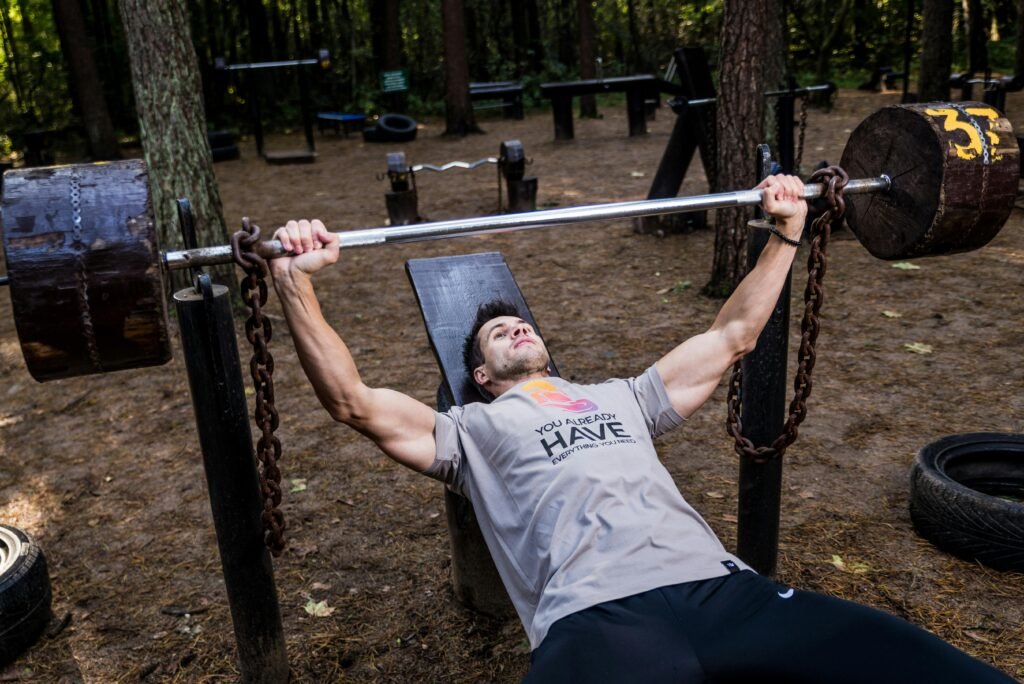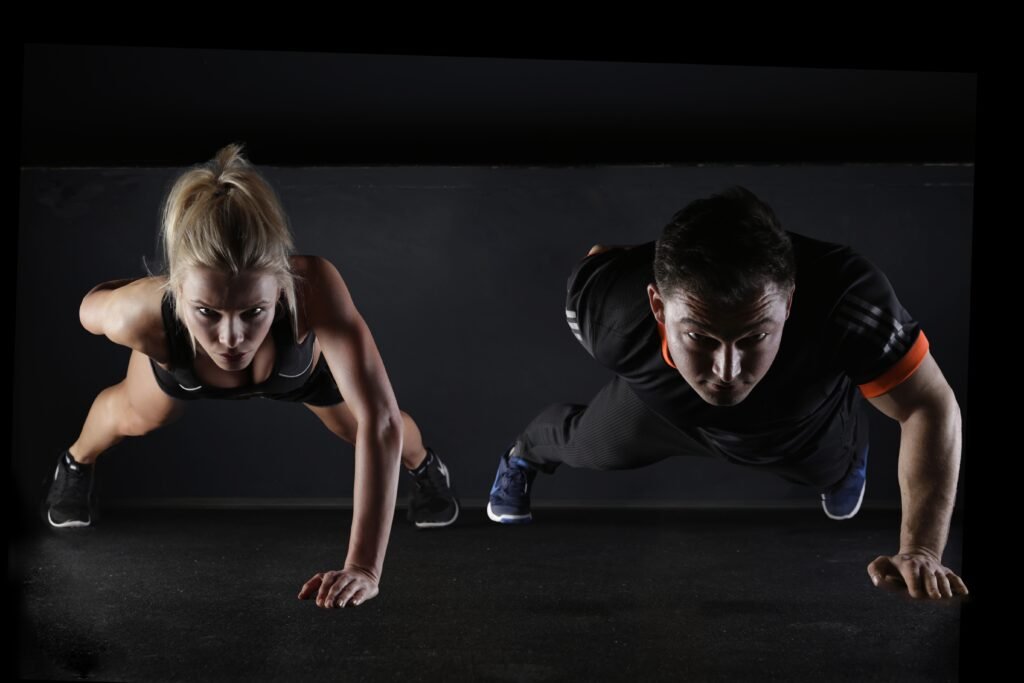Bench Press: The Ultimate Guide to Building Upper Body Strength
The bench press is a staple in strength training, often seen as a benchmark for upper body power. Whether you’re new to lifting or a seasoned gym enthusiast, understanding the ins and outs of the bench press can help you maximize your gains and stay safe.
Benefits of the Bench Press
Increases Upper Body Power
The bench press is renowned for its ability to build significant upper body strength. This compound exercise engages multiple muscle groups, including the chest (pectorals), shoulders (deltoids), and arms (triceps). Regular bench pressing can lead to noticeable gains in muscle mass and strength.
According to fitness expert John Smith, “The bench press is a go-to exercise for anyone looking to build a powerful upper body. It not only develops size but also enhances overall pushing power.” This makes the bench press a valuable exercise for athletes and fitness enthusiasts alike (Healthline).
Enhances Everyday Functionality
The strength you gain from bench pressing isn’t just for show—it translates into real-world benefits. Everyday tasks like lifting objects, pushing heavy doors, or even participating in sports require upper body strength.
As noted by the American Council on Exercise, compound movements like the bench press improve overall muscle coordination and movement efficiency, making daily activities easier and more efficient.
Supports Core Stability and Balance
While primarily a chest exercise, the bench press also engages your core muscles. Keeping your body stable on the bench requires core activation, which helps develop balance and coordination.
“A strong core is crucial for maintaining proper form during the bench press,” says fitness coach Sarah Johnson. “It not only supports the spine but also ensures you can lift heavier weights safely” (Harvard Health).
Contributes to Bone Density
Resistance training, including bench pressing, is essential for promoting bone health. Lifting weights applies stress to the bones, which helps increase bone density and reduce the risk of osteoporosis. Studies have shown that regular weight-bearing exercise can significantly improve bone strength and health (National Osteoporosis Foundation).
Offers Variety for Continued Progress
The bench press isn’t just about lying flat on a bench and pushing up a barbell. You can adjust the angle of the bench or the width of your grip to target different areas of your chest and arms.
Variations such as incline, decline, and close-grip bench presses allow you to focus on different muscle groups and keep your workouts from becoming monotonous. These variations are key to developing a well-rounded and aesthetically pleasing upper body (Strength and Conditioning Journal).
Limitations of the Bench Press
Risk of Injury
Despite its benefits, the bench press can lead to injuries if not performed correctly. Common issues include shoulder strains, wrist pain, and elbow injuries.
To minimize these risks, it’s crucial to maintain proper form and use a weight that you can handle safely. “Lifting too heavy without proper technique is a recipe for injury,” warns sports physiotherapist David Lee. “Focus on form first, then gradually increase the weight” (Journal of Strength and Conditioning Research).
Muscle Imbalance Concerns
Over-reliance on the bench press can lead to muscular imbalances, particularly between the chest and back. Neglecting back exercises in favor of more chest work can result in rounded shoulders and poor posture.
To counter this, include pulling exercises like rows and pull-ups in your routine. Balancing your training is crucial for maintaining good posture and overall shoulder health (Journal of Orthopaedic & Sports Physical Therapy).
Potential for Training Plateaus
Consistently performing the same bench press routine can lead to plateaus, where strength and muscle gains stall.
To continue progressing, incorporate strategies like progressive overload, which involves gradually increasing the weights, repetitions, or intensity of your lifts. This approach challenges your muscles and promotes continued growth (Strength Training Journal).
Dependence on Equipment
The bench press requires specific equipment: a bench, barbell, and weights. This need for equipment can be a barrier for those who prefer home workouts or don’t have access to a fully equipped gym.
Fortunately, there are alternative exercises like push-ups and dumbbell presses that can provide similar benefits without the need for a bench or barbell (American College of Sports Medicine).
Safety Tips for the Bench Press
Warm Up Thoroughly
A proper warm-up is essential before attempting heavy lifts. Start with light cardio to increase your heart rate and follow with dynamic stretches to prepare your muscles and joints.
Warming up increases blood flow to the muscles and reduces the risk of injury (National Strength and Conditioning Association).
Focus on Technique
Using the correct form is paramount to prevent injury and maximize the effectiveness of the bench press. Key points include keeping your feet flat on the ground, maintaining a slight arch in your lower back, and controlling the barbell as you lower it to your chest.
Fitness trainer Emily Richards advises, “Think of the bench press as a full-body exercise. Your whole body should be engaged, not just your arms and chest” (British Journal of Sports Medicine).
Final Thoughts: The Bench Press in Your Fitness Journey
The bench press remains one of the most effective exercises for building upper body strength and power. When performed with proper form and a balanced workout routine, it offers benefits that go far beyond aesthetics, including improved functionality, stability, and bone health.
By addressing its limitations and incorporating variations, you can enjoy steady progress and minimize risks. Whether you’re a beginner or an experienced lifter, the bench press deserves a place in your fitness regimen.
Ready to press forward in your fitness journey? Remember: form first, then weight.
References
- Healthline – The Benefits of the Bench Press
- American Council on Exercise – Functional Strength Training
- Mayo Clinic – Functional Strength Training
- Harvard Health – Core Stability Exercises
- National Osteoporosis Foundation – Bone Health and Exercise
- Strength and Conditioning Journal – Bench Press Variations
- Journal of Strength and Conditioning Research – Injury Prevention in Bench Press
- Journal of Orthopaedic & Sports Physical Therapy – Balancing Chest and Back Training
- British Journal of Sports Medicine – Proper Bench Press Form
- National Strength and Conditioning Association – Importance of Warm-Ups



